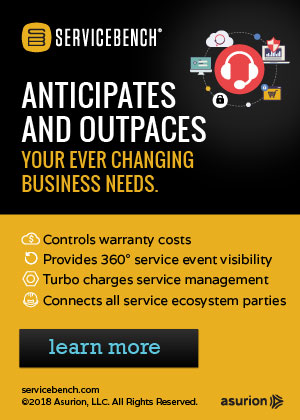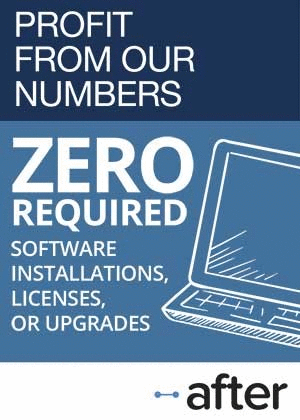The 80/20 Rule of Product Warranties:
Almost 80% of all the warranty claims and accruals reported by U.S.-based companies come from only 20 companies. Upwards of 500 other manufacturers account for only 20% of the total. But the expenses of the largest warranty providers are also a higher share of their sales revenue.
It's no surprise that the largest manufacturers also pay the most warranty expenses. In fact, the top 20 warranty providers pay almost 80% of the entire total. But what's something of a surprise is that the largest warranty providers also seem to have much higher expense rates than their smaller competitors.
Since early 2003, we've collected four essential metrics from the financial statements of U.S.-based manufacturers: the amount of claims paid, accruals made, reserves held, and product sales. Using the latter metric along with the amount of claims and accruals reported, we've also calculated the claims rate as a percentage of sales, and the accrual rate as a percentage of sales.
Even after accounting for all the mergers and acquisitions of the past 15 years, the list of U.S.-based warranty providers still includes more than 500 manufacturers. However, in a real-world example of the 80/20 rule, we've found that the 20 largest warranty providers account for almost 80% of the entire total.
Apple Inc. is now the largest warranty provider of them all, having pushed past both General Motors Co. and Ford Motor Co. in recent years. Others at the top of the list include computer manufacturers HP Inc. and Hewlett Packard Enterprise Co., both separately and together, data storage maker Western Digital Corp., data network manufacturer Cisco Systems Inc., as well as truck and heavy equipment manufacturers Paccar, Navistar International, Caterpillar, Deere, Cummins, and AGCO. From the aerospace industry come Boeing Co. and United Technologies Corp., and from the appliance sector comes Whirlpool Corp.
Out of the top 20 warranty providers, we now have third quarter financial statements from all but Johnson Controls International plc. That company is still about a week away from publishing its annual report for the fiscal year ended September 30, so we've included an estimate for its warranty expenses during the months of July, August, and September. Also, General Electric Co., Emerson Electric Co., and Honeywell International Inc. publish their warranty expenses only once a year, so we have included estimates for them based on their 2016 expenses.
Claims Paid per Quarter
In Figure 1, we've detailed the warranty claims paid by each of these manufacturers, with all the companies from number 20 on down lumped together in the "other" category. For the first nine months of calendar 2017, the top 20 have reported $13.4 billion in claims paid, which is 72% of the entire total. In the same nine months of 2016, they accounted for $14.5 billion in claims, or 75% of the total.
Figure 1
Top 20 Warranty Providers
Claims Paid by U.S.-based Manufacturers
(in US$ millions, 2003-2017)

As was mentioned, Apple is the largest among them, but as we detailed last week, its claims payments are down sharply from the previous year. Others that saw even larger proportional declines in claims payments include Boeing, Emerson, HP Inc., Navistar, and Western Digital.
Only three of the top 20 paid more in claims during the first nine months of 2017 than they did in the same period of 2016. They are Cummins, Ford, and United Technologies. Ford saw a $150 million increase, while the other two reported only slight increases.
Warranty Accruals
The track record of the top 20 in terms of warranty accruals made is less clear, because of the tendency of Apple to accrue unusually large amounts during the months of October, November, and December. We can see the annual spikes in the data caused by this phenomenon in Figure 2 below. Apple is at the bottom, so these spikes are easy to see. But they make it more difficult to see the overall trend.
Figure 2
Top 20 Warranty Providers
Accruals Made by U.S.-based Manufacturers
(in US$ millions, 2003-2017)

For the first nine months of calendar 2017, Apple's accrual total is up sharply, growing by more than $260 million. However, three companies reported proportionally larger increases in accruals: Caterpillar, Cummins, and Deere, although the dollar amounts were smaller.
Meanwhile, some of the largest declines in warranty accruals were reported by Boeing, Cisco, Ford, GM, and HP. Boeing, in fact, cut their accruals by more than a third, compared to the same period in 2016. Only three other members of the top 20 cut their accruals by any amount.
Accruals for the entire top 20 during the first nine months of 2017 are relatively unchanged at $11.7 billion. That represents about 70% of the total for all U.S.-based manufacturers. All the other manufacturers together saw a decline of about $80 million in their combined accrual totals.
Warranty Reserves
Among the 16 members of the top 20 for which we have definite September 30 balances for their warranty reserve funds, seven reported lower balances than a year ago while nine saw increases. In Figure 3, the more than $1 billion decline in reserves reported by GM is clearly visible. But proportionally larger declines were reported by Boeing, HP, and Navistar.
Figure 3
Top 20 Warranty Providers
Reserves Held by U.S.-based Manufacturers
(in US$ millions, 2003-2017)

Companies seeing the largest increases included AGCO, Cummins, Deere, Whirlpool, and Western Digital. Much smaller increases were reported by Apple, Ford, Caterpillar, and United Technologies.
The top 20 accounted for 76% of the total $41.0 billion balance as of September 30, which was about the same share they had of the $41.9 billion balance a year before. Together, the top 20 accounted for about 80% of the $900 million decline. So even in that respect, there's apparently an 80/20 rule in play.
Warranty Expense Rates
Every March since 2003, we take the claims and accrual totals of all U.S.-based manufacturers, and compare them to the corresponding product sales totals. We first subtract all the service, finance, royalties, and rental income, to come as close as possible to a direct comparison of warranty expenses to warranted products.
This time, we've separated the top 20 from the others, and run the calculations twice. And what we've found is that not only do the top 20 account for most of the warranty expenses, but also those expenses represent a higher proportion of the product sales revenue.
One reason for this discrepancy may be that the smaller companies are not as diligent as the larger companies when it comes to separating their product revenue from their service and finance revenue. For instance, Tesla Inc. just began separating their car sales from their leasing revenue. Others choose to segment their revenue by geography rather than by product line, so we know we're counting lots of revenue for them that has no accompanying warranty expenses. Therefore, their calculated claims and accrual rates will be a bit lower than they should be.
However, the gap between the warranty expense rates of the top 20 and the others is wider than can be accounted for merely by poor revenue segmentation habits. As can be seen by a comparison of the data in Figures 4 and 5, the size of the gap has averaged one percent for the past 15 years, though it has on occasion been as wide as 1.3%.
Figure 4
Top 20 Warranty Providers
Average Warranty Claims & Accrual Rates
(as a % of revenue, 2003-2017)

Since 2003, the claims and accrual rates of the top 20 warranty providers has more or less steadily dropped, from around 2.5% to below two percent. The two exceptions are in 2009, when the recession drove sales down and caused the claims rate to rise, and in 2014, when a rash of recalls caused the accrual rate to rise.
As of September 30, the top 20 spent an average of 2.0% of their product revenue on warranty claims, and set aside an average of 1.9% of their product revenue as warranty accruals. However, all the companies in the other category spent only 0.9% of their revenue on claims, and set aside only 0.8% of their revenue for accruals. So the gap between them was around 1.1% -- a bit higher than average.
Largest Increases & Decreases
Among the individual companies, Navistar was the highest above average, with a 5.0% claims rate and a 2.3% accrual rate. Others significantly above average included Whirlpool, GM, HP, and Deere.
Some of the companies with the lowest warranty expense rates included Boeing, Honeywell, Paccar, Western Digital, and United Technologies. However, it's difficult to make any statements about the relation of these expense rates to product quality or repair costs, because what's appropriate for one industry or one product line may not be typical for another.
What makes more sense is to compare the latest expense rates to the same company's year-ago rates, assuming that their product lines haven't shifted dramatically, and the companies haven't revised the way they account for their claims and accruals. On that basis, while the top 20's latest average claims rate is about the same as a year ago, their accrual rate is up by 0.2%.
Companies that have seen the largest increases in their accrual rates include Cummins, Apple, and Deere. Companies that have reduced their accrual rates the most include GM, HP, Boeing, and Western Digital. Normally, accruals remain proportional to sales, so these changes are on top of any rise or fall in sales. So they probably have some bearing on product quality or repair cost.
Figure 5
Other Warranty Providers
Average Warranty Claims & Accrual Rates
(as a % of revenue, 2003-2017)

In Figure 5, we've detailed the average claims and accrual rates of the hundreds of other companies outside the top 20. We should note that over the past 15 years, as companies have been acquired or gone out of business, and some have chosen to stop reporting their warranty expenses entirely, they've dropped off the list of warranty reporters. So some of the steady decline seen since 2003 may be related to their departures.
For instance, the top 20 of five years ago would have included Dell Inc., EMC Corp., and Jarden Corp., among others. The top 20 of ten years ago would have included Motorola, Microsoft, Sun Microsystems, Lexmark, and Nortel Networks. And there are numerous smaller companies that reported very high warranty expense rates shortly before going out of business or getting themselves acquired by more efficient competitors. In other words, it's survival of the fittest, with fitness measured by the ability of the survivors to control their warranty costs. So the exits of all those troubled companies years ago undoubtedly helped bring down the averages over time.
What's striking about the data in Figure 5 is how it clearly shows a slight upturn in recent years. The other group's expense rates fell below 0.7% at the start of 2015. They're still below the historical average, but they've risen over the past two years. Then again, they started 2003 in a range of 1.2% to 1.4%, so there's been lots of progress since. And, they remain significantly below the average expense rates of the top 20 companies.
Happy Thanksgiving Day!
Next week, the U.S. celebrates its Thanksgiving Day holiday, followed by what's come to be known as Black Friday, the craziest shopping day of the entire year. In anticipation of that holiday schedule, we're going to skip a week on November 23 and publish our next newsletter on November 30.
By the way, in yet another example of the 80/20 rule, about 80% of our readers are based in the U.S., but the remaining readers are dispersed across far more than 20 other countries around the globe. For some readers in places such as South America and Australia, it's getting warmer, with summer about to begin next month. So perhaps in future years we'll put out an internationally-themed newsletter just for the 20% who don't have a holiday next week.
Then again, that means December starts soon. It's hard to believe the year is almost over, but that also means the holiday shopping season is only just beginning, along with the rush to sell extended warranties. And it also means that Warranty Week is about to turn 15 years old. Please stay safe if you're traveling, and stay warm if you're not, and we'll see you again after the break.









